Dr. Jonathan Jiang dreams of beaming an easy-to-read message into space before civilization collapses. He’s run the simulations to test humanity’s self-destruction rate. According to his computers, there’s a 0.1 percent chance that humanity destroys itself in the not-so-distant future. He’s even more pessimistic than Stephen Hawking, who bowed out of public life saying, “I don’t think we will survive another 1,000 years without escaping beyond our fragile planet.”
Jiang, who works for NASA’s Jet Propulsion Laboratory, co-authored the 2022 paper “A Beacon in the Galaxy,” which argues for the importance of streamlining the communications we send into space hoping they might be intercepted by an interplanetary species. The Seventies-era Golden Voyager message was launched on a golden phonograph, and the Arecibo Message of 1974 still holds that Pluto is a planet. Outdated to say the least. One of the important items Dr. Jiang and his coauthors want to load into future messages is the pixelated image of a nude man and woman. For all his talk of modernizing our communications into space, the images look like a postcard of Adam and Eve printed out by fax machine.
The idea of alien life has sparked renewed interest in the last couple of years, when whistleblowers have gone public with alleged evidence of UFOs and the Pentagon released footage showing inexplicable aerial movements captured by the military. All the more reason to turn to that ancient mover and shaker to appeal to extraterrestrials, according to Jiang. The nude is an attempt to show the aliens the anatomy of the creatures nominally in control of planet Earth. “If there are aliens, they won’t speak English or Japanese or Korean,” he said. “The message must be simple.”
The proposal is not without its detractors. Anders Sandberg, senior research fellow at Oxford’s Future of Humanity Institute, worries that alien-friendly pornography may prove too inviting. Portraying humans at their most intimate and vulnerable could elicit an invasion from above.
“[Sandberg] said disclosing our location is dangerous. This kind of thinking is humans thinking like children. Everything must be a fight. This is why we can’t survive long. Sooner or later, we’ll kill ourselves altogether. If any civilization can survive long enough to travel to the stars, they must not act like children. They are adults,” Jiang says. It is a novel concept, this idea that the technological sophistication needed for interstellar travel would be synonymous with a strong moral compass. “These must be adults,” you imagine an eighth-century Northumbrian grandee saying as he observed the great voyagers of his day come ashore in their horned helmets and wolf pelts.
NASA is less worried about an invasion than it is self-destruction. The agency’s Sanctuary on the Moon project is further proof that our space experts are becoming ever more obsessed with the fall of humanity and already plotting attempts to preserve our existence. The Artemis program seeks to place “the essence of humanity” on the Moon — turning the lunar satellite into an off- Earth museum where future beings can find human remains, the sound of a human heartbeat, paintings by Van Gogh and da Vinci, and blueprints for rockets and the building blocks of human existence. The information will be contained on sapphire discs, rather than golden records. The agency did not return requests for comment about whether any nudes made it onboard.
NASA once again finds itself in a space race, though they are battling private-sector actors rather than the Evil Empire this go-around. While government rocket scientists look to the Moon as a monument to the living, private companies are trying to turn it into an overpriced cemetery, Earth’s exosphere an interstate billboard for fast food. Marketing agencies have launched chicken nuggets and Slurpees into orbit; Pizza Hut delivers to the International Space Station. The leading voice for the colonization of Mars is a billionaire who keeps tweeting (er, X-ing) that he wants to start the Texas Institute of Technology and Science, because its acronym would be TITS. He even yeeted a Tesla convertible into space to observe all the fast food passing by. No wonder then that scientist David Cullen authored the research paper “Sex in Space: Consideration of Uncontrolled Human Conception in Emerging Space Tourism,” which addresses the inevitability of interstellar hook-ups and the need for research into women who become gravid in anti-gravity. Like everything else, he argues, the colonization of space will be commercial, violent, sexualized or all of the above. It’s about time people take the final frontier seriously, according to Jiang.
“It’s dangerous for people like me, you know, as a NASA scientist, to say what we are truly thinking,” Jiang says of the lack of seriousness with which commercial enterprises take space travel. “We try to use our activities to encourage people to think about what we are doing now in space. We really want to use this as a venue to educate people.”
As far as we know, planetary geologist Gene Shoemaker was the first person buried on the Moon. Grieving family members and a few friends at NASA arranged to place an ounce of his ashes aboard the Lunar Prospector in 1998. The rover circled the Moon for about a year and a half before intentionally crashing into a crater. But Shoemaker’s Moon funeral was not a one-off. The trend of “space burials” has begun to catch on. Enter Celestis, a company devoted to space burials. Regular people can sign up to have their remains dropped on the Moon, but Celestis is also sending the DNA of JFK and George Washington into Deep Space, via locks of hair — supplied by an anonymous donor — that have been ground into a powder and placed inside titanium 5 cannisters.
“Just like they were some of our nation’s great leaders during their time, we felt it was only fitting to include their DNA on this first-of-its-kind mission and have them symbolically become one of Earth’s first ambassadors to lead this voyage out to deep space,” company president Colby Youngblood says of the expected two-year trek into deep space.
Celestis has come a long way since its first flight in 1997, which carried the remains of Star Trek creator Gene Roddenberry and drug advocate Timothy Leary. It was sent into orbit in 1997 and fell back to Earth in 2002. When you sign up for a “Moon-eral,” Celestis will send you a “flight sample kit” for your remains to be mailed to them; the remains will be “respectfully stored” in a bank safe deposit box until the time of launch.
This is no passing fad either, according to Youngblood. Cremation now accounts for 50 percent of funerary services and could exceed 80 percent within a decade. People will be looking for novel ways to get creative with Pop-Pop’s urn. “There is a significant upward trend,” he says. “We once went seven years without a launch because we couldn’t get a provider. Now we’re likely able to fly two to three missions a year… The way our culture handles funerals and memorials is changing rapidly.” The company has even partnered with Dignity Memorial to champion space as resting place in its 3,000 funeral homes.
We’re not just launching the dead into outer space; we’re also mixing them into our rain clouds. In just four easy steps, you can sign up with Aura Flights to have your ashes dumped from a gas balloon in the stratosphere. Founders Alex Baker and Dr. Chris Rose “discovered that they could release the ashes high enough that they would travel the world for months, eventually settling across the entire planet,” according to spokesman Alex Keen. “In the end, the ashes join with the mineral dust particles, water droplets and ice crystals that constitute cloud formation,” Keen says. “We do see some negative comments on social media, which largely stem from misconceptions about the environme tal impact of the service. For example, a lot of people are rightly concerned about the prospect of littering in space.”
Outer space has always been a mirror for the things that seem most important to current civilization. We used to name the stars after Greek gods. Now we shoot nudes and dead boomers into the great unknown. And the longer our space-messages go unanswered, the more desperate they’re likely to become. Especially when a lot of these sort-of-formal SOSes are being written by apocalypse-fearing astronomers at NASA. If we really want some hypothetical aliens to understand us, we might also consider launching SSRIs and McDonald’s boxes and hydrogen bombs and memes and GIFs of Britney Spears dancing with knives.
It’s interesting to think how we will send an innocent, positive message to these imagined beings, that perhaps we’ll lure them into thinking of some human utopia with nudes and music. As they approach, they’ll have to dodge human remains, fast food and abandoned convertibles — if we haven’t already turned the Moon into a Times Square of peep shows and artists painting caricatures of space tourists.
They may see this all and turn around, or, if they’re as intelligent as Dr. Jiang thinks they are, maybe they’ll use the DNA of JFK and George Washington to restart civilization with the binary blueprints of humanity… until the whole thing repeats.
This article was originally published in The Spectator’s May 2024 World edition.



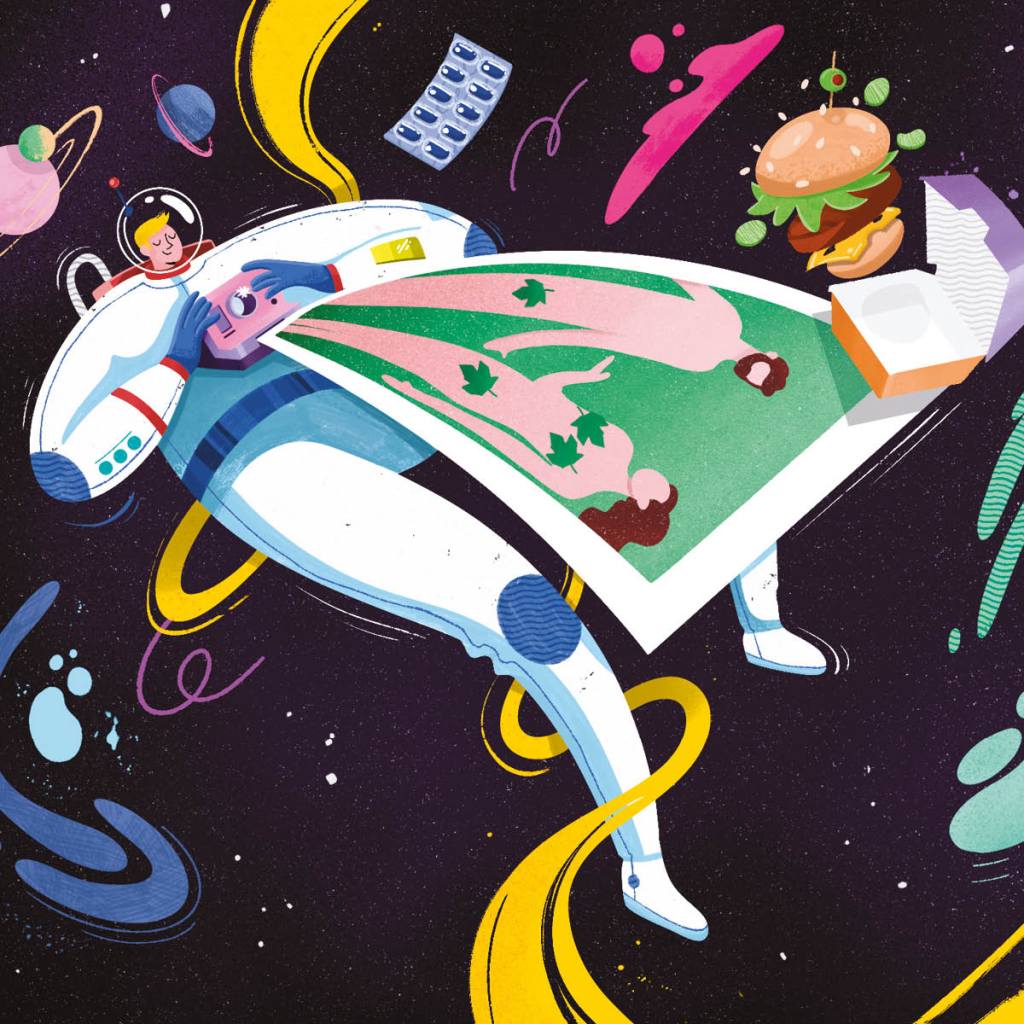






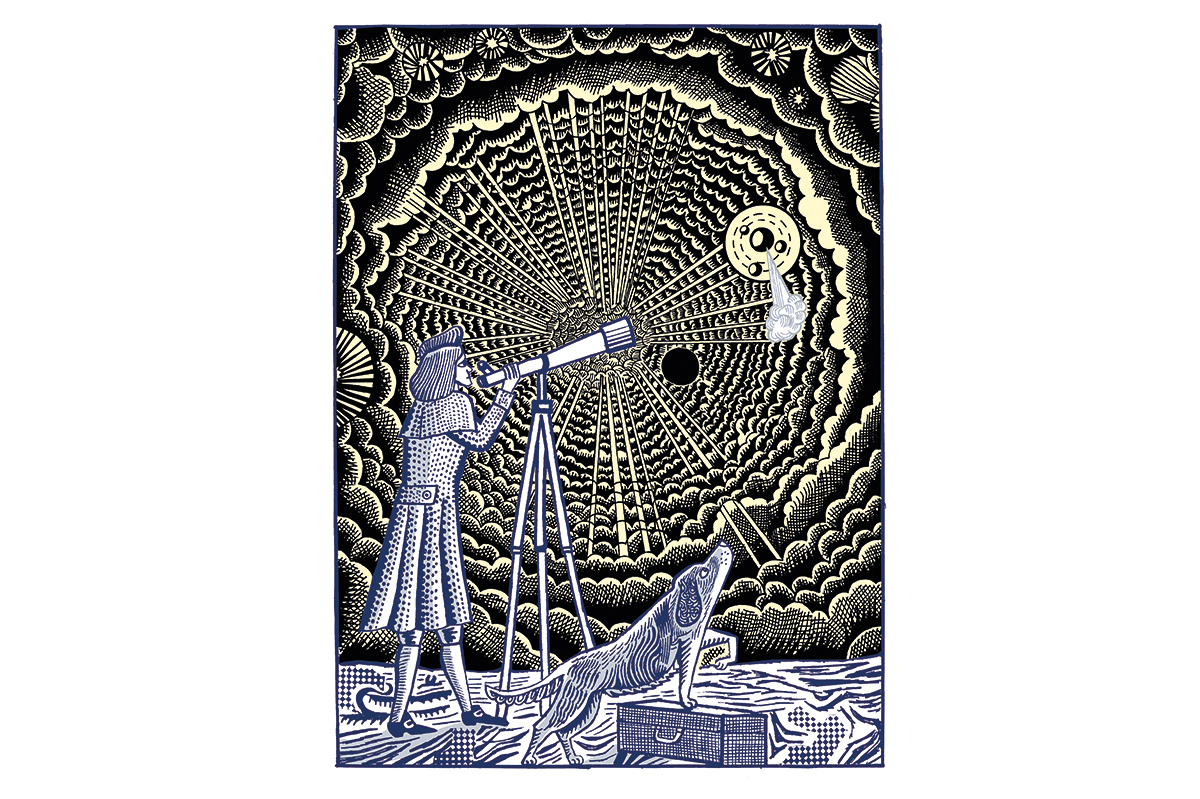
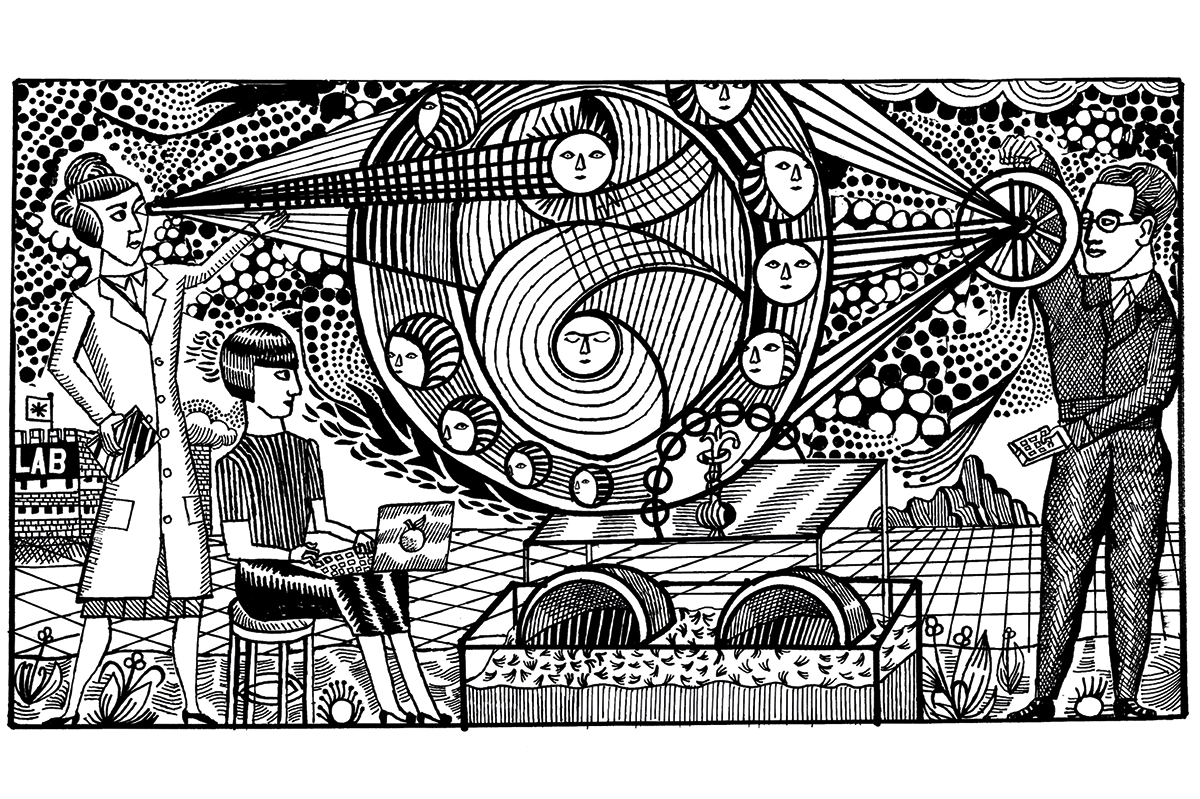
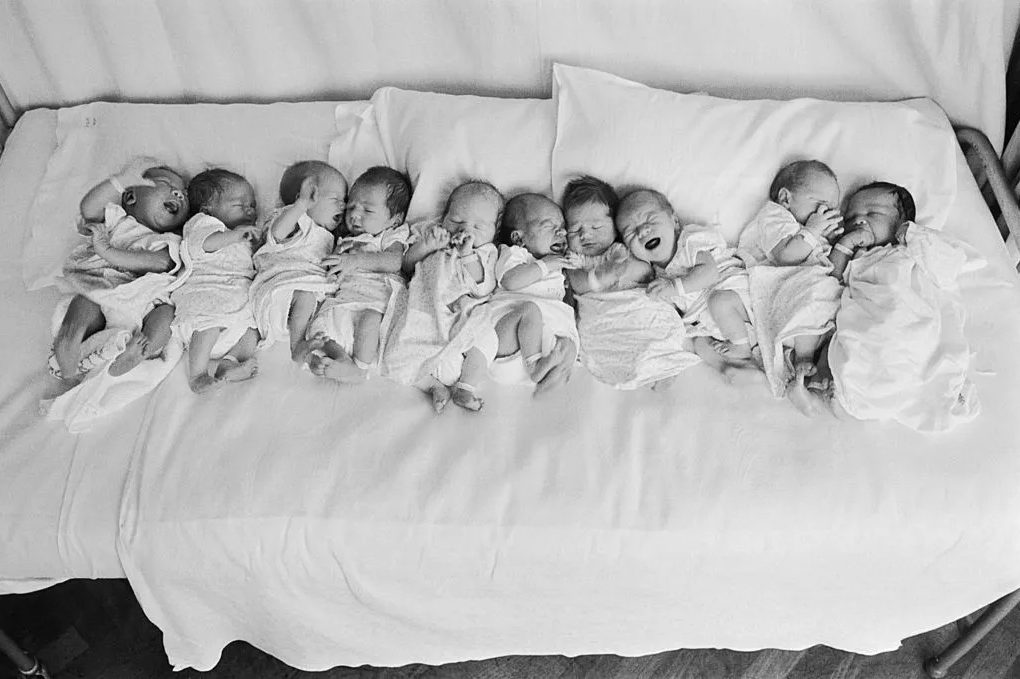


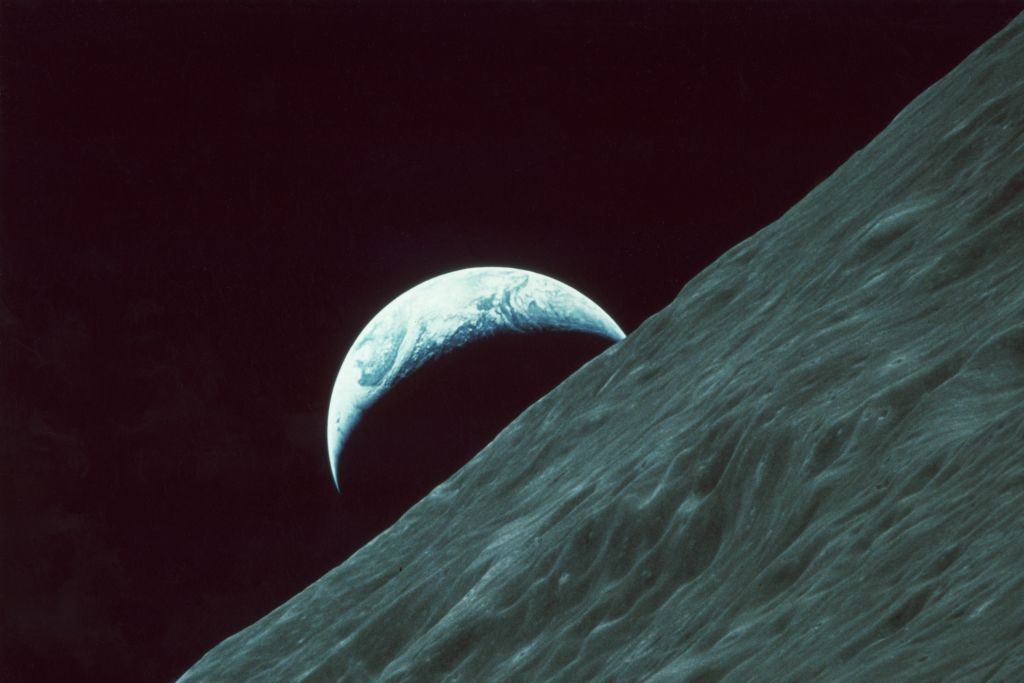







Leave a Reply